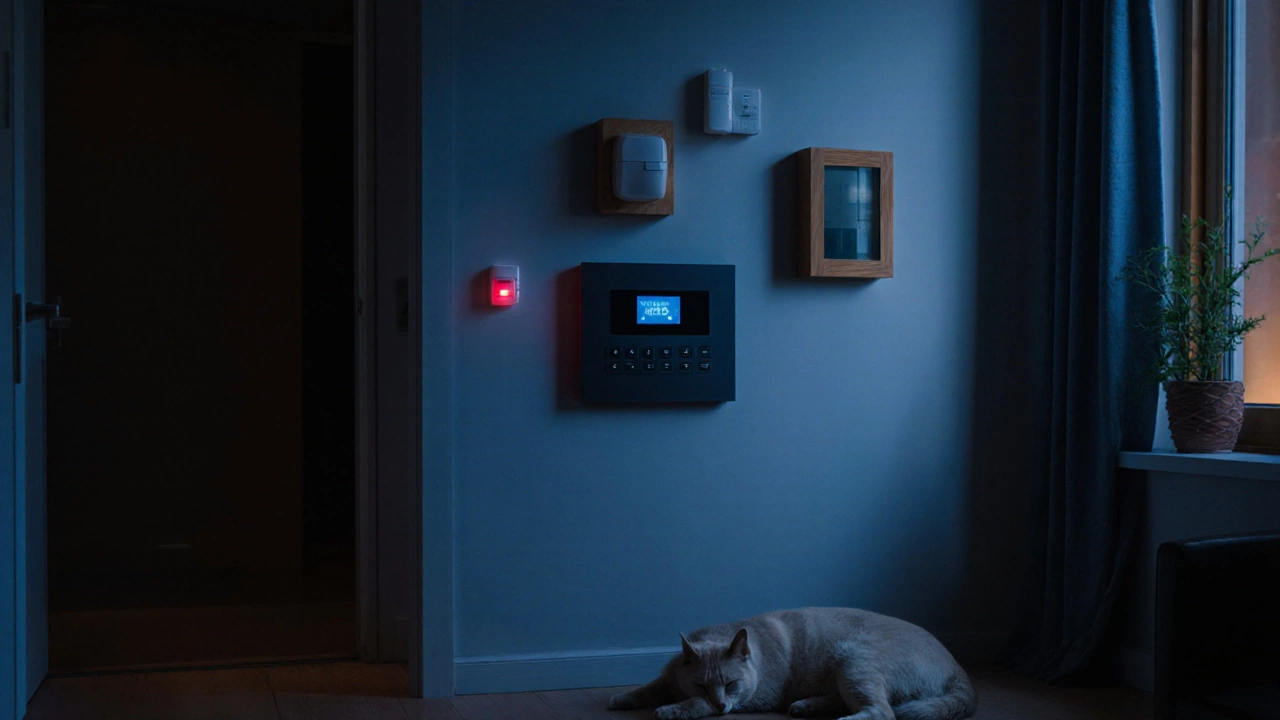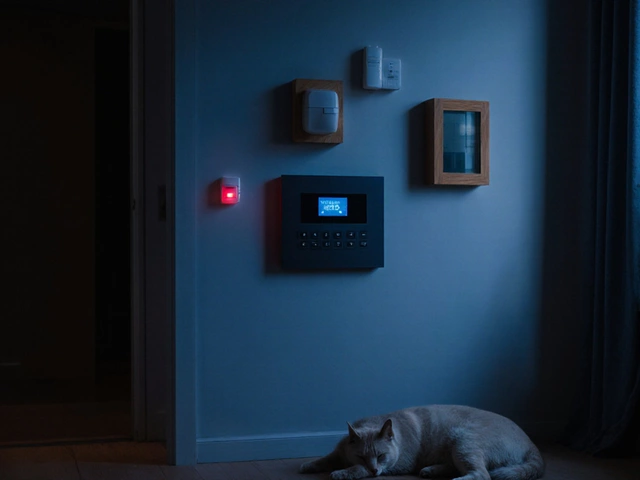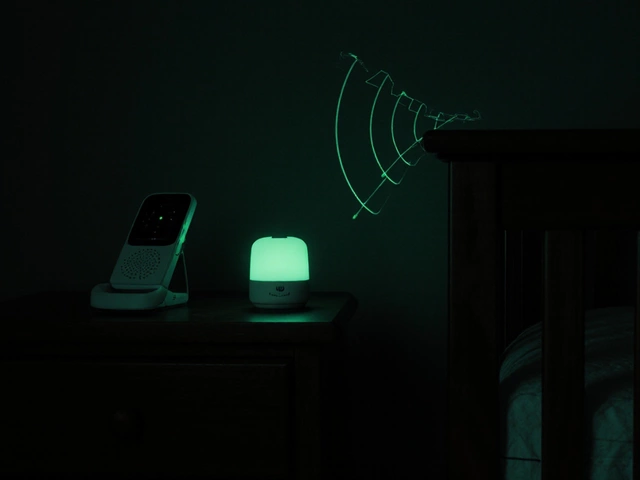Burglar Alarm System Cost Calculator
Compare Your Alarm System Costs
See the total cost over time for different types of burglar alarm systems based on the information in our guide.
A burglar alarm system isn’t just a siren that goes off when someone breaks in. It’s a coordinated network of sensors, control units, and communication tools designed to detect, alert, and deter intruders before they can do damage. Think of it like a silent guard that never sleeps - watching doors, windows, and rooms, and instantly sending a signal when something’s wrong. In 2025, these systems are smarter, more reliable, and more accessible than ever, but not all of them work the same way. Knowing what’s inside a typical alarm system helps you pick the right one for your home or business.
How a Burglar Alarm System Actually Works
A burglar alarm system operates in four clear stages: arming, detection, alerting, and responding. First, you arm the system - either manually through a keypad or automatically via your phone app. Once armed, the system starts monitoring all connected sensors. If a door opens, a window breaks, or motion is detected where it shouldn’t be, the sensors send a signal to the control panel. That panel processes the signal in under half a second and triggers the alarm.
The alarm itself isn’t just noise. Modern systems use 105-120 decibel sirens at a 3kHz frequency - loud enough to cut through traffic, music, or TV. But the real power comes from what happens after the siren sounds. Monitored systems automatically contact a central station, which can verify the alarm using video feeds or phone calls before dispatching police. Self-monitored systems just send a push notification to your phone. The difference? One gets help in under a minute. The other leaves you to handle it yourself.
The Five Core Components of Every Alarm System
Every effective burglar alarm has five essential parts working together:
- Control Panel: This is the brain. Modern panels handle 8 to 128 zones - meaning you can monitor each door, window, and room separately. They run on 12V DC power with a backup battery that lasts 12-24 hours during outages. Most now use lithium-ion batteries instead of old lead-acid ones because they last longer and charge faster.
- Door and Window Sensors: These use tiny magnetic switches called reed switches. When the door opens, the magnet moves away from the sensor, breaking the circuit. They trigger at gaps as small as 0.5 inches, so even a slightly ajar window sets them off.
- Motion Detectors: Most use passive infrared (PIR) tech to sense body heat. They detect temperature changes as small as 0.1°C within a 15-50 foot range. Better models have pet immunity - they ignore animals under 40 pounds - but improper placement near vents or radiators causes 62% of false alarms.
- Glass Break Detectors: These listen for the specific sound of shattering glass - a frequency between 3-5 kHz. They cover 15-25 feet and reduce false alarms by 37% compared to motion-only setups, especially in homes with pets or loud TVs.
- Communication Module: This is how the system talks to you or a monitoring center. Wired systems use copper lines. Wireless ones use radio frequencies like 433 MHz or 915 MHz. The best systems now have dual-path communication - both Wi-Fi and cellular backup (4G/5G) - so if one fails, the other still works. The FBI recommends this because 28% of professional burglars now jam signals to disable alarms.
Types of Burglar Alarm Systems: Which One Fits You?
There are four main types, each with trade-offs:
- Wired Systems: These are the most reliable - 99.9% signal success rate. But they need professional installation, costing $800-$1,500. Best for new builds or major renovations. Hard to retrofit into older homes.
- Wireless Systems: Make up 65% of new installations. Easy to install yourself, saving $300-$500 in labor. But they rely on batteries that need replacing every 2-3 years. Signal reliability is 95%, which is good, but not perfect. Great for renters or those who move often.
- Monitored Systems: These connect to a 24/7 monitoring center. You pay $25-$150 a month, but you get instant help. Police dispatch takes 45 seconds on average. Self-monitored systems? You might wait 5-10 minutes to call 911 yourself. Commercial users report 87% satisfaction with monitored systems - far higher than self-monitored.
- Smart Systems: These link to your phone, Alexa, or Google Home. You can arm them remotely, get live alerts, and even see who’s at the door. But 32% of smart alarms had exploitable security flaws in 2023. Hackers can sometimes disable them remotely. Always choose systems with 128-bit encryption and automatic updates.
Price ranges vary widely. Basic DIY systems start at $200. Premium monitored setups with video verification cost $1,000-$3,000 upfront, plus $50-$150 monthly. Commercial systems are 3-5 times more expensive and must meet UL 2610 standards.
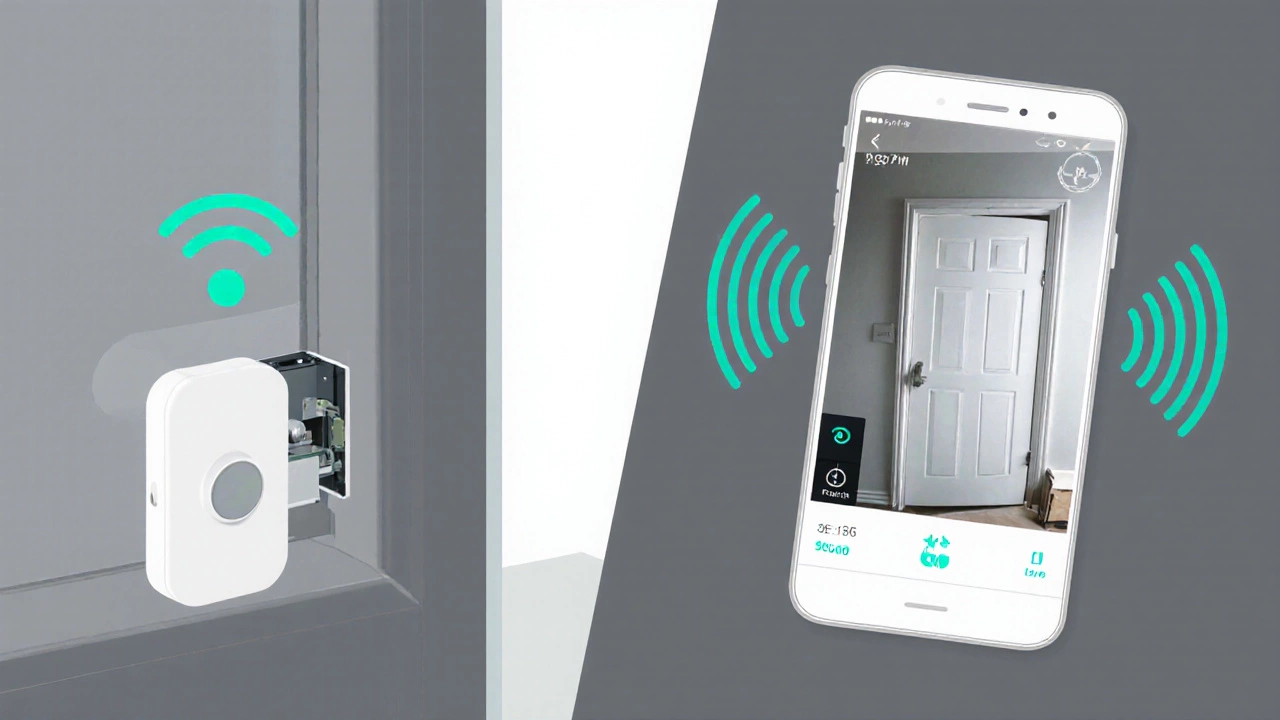
What Experts Say About Real-World Performance
Security professionals agree on one thing: layered detection works best. A system with only door sensors catches about 78% of intruders. Add motion detectors inside, and that jumps to 92%. That’s because burglars often enter through a door, then move through the house - so interior sensors catch them even if they bypass the front door.
Dr. Michael Pozmantier, CSO of CSISecurity, puts it simply: “Perimeter sensors are your first line. Interior sensors are your safety net.”
But even the best systems fail if installed wrong. On Angi, 62% of repair calls are due to bad sensor placement. Motion detectors near windows get triggered by sunlight. Door sensors misaligned by a millimeter won’t trigger at all. And only 43% of homeowners check their backup batteries quarterly, even though 22% of users in hurricane zones lost cellular backup during storms.
One major blind spot? Cybersecurity. A 2024 IoT Security Foundation report found that 42% of smart alarm systems had unpatched vulnerabilities. It takes an average of 73 days for manufacturers to release fixes. That’s more than two months where your system could be hacked. Always choose brands that push automatic updates and avoid models that require manual firmware downloads.
Installation, Maintenance, and Avoiding Common Mistakes
If you’re installing a system yourself, expect to spend 4-8 hours for a basic setup. For full home coverage with 12+ sensors, plan for 16-24 hours. Professional installers charge $50-$100/hour, with most jobs taking 4-6 hours. That’s $200-$600 in labor.
Here’s what to avoid:
- Don’t put motion detectors near heat sources like radiators, HVAC vents, or sunny windows - that’s the #1 cause of false alarms.
- Always test sensors monthly. Press the test button on each one. If the panel doesn’t respond, the sensor is dead or misaligned.
- Replace wireless sensor batteries every 2 years, even if they still “work.” Lithium batteries degrade silently.
- Use “stay arming” mode when you’re home. This disables interior motion sensors but keeps doors and windows active. Perfect for nights or when you’re moving around the house.
- Update firmware regularly. Turn on auto-updates if your system offers them.
Professional calibration every year keeps detection accuracy above 95%. Skip this, and your system becomes unreliable - and that’s worse than having no alarm at all.
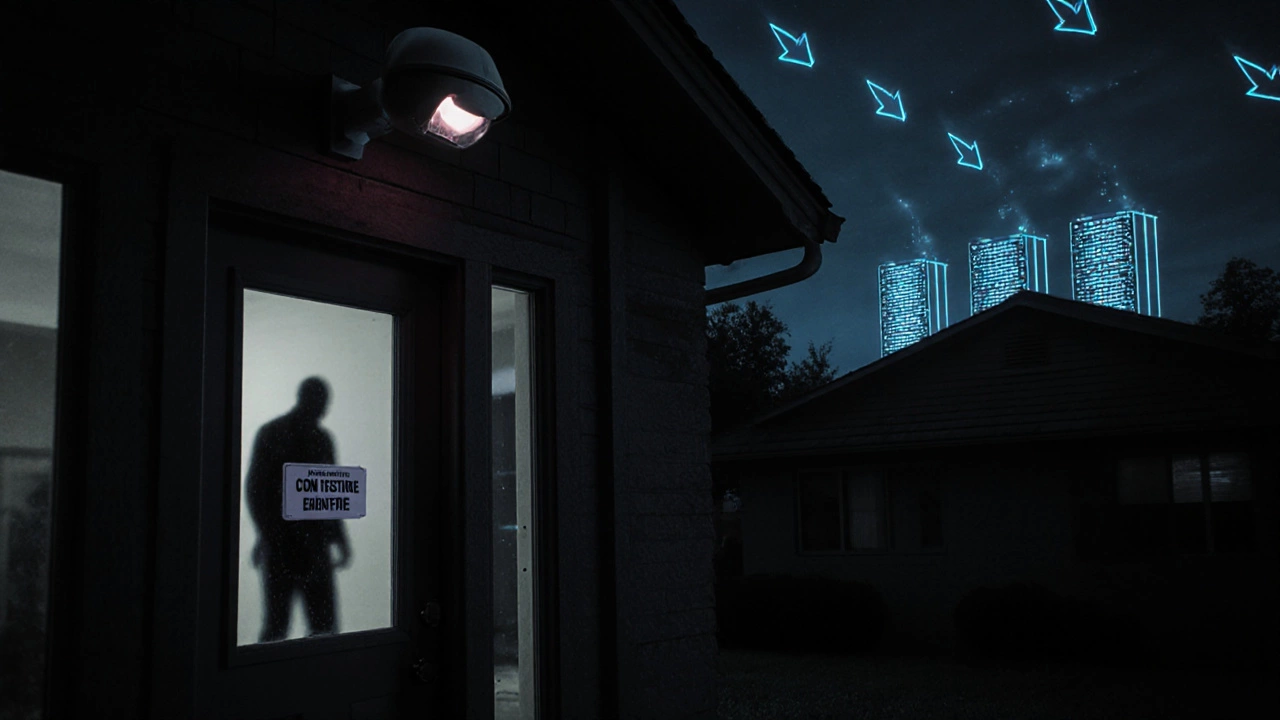
The Bigger Picture: Market Trends and Future Changes
The global burglar alarm market hit $52.3 billion in 2023 and is projected to grow to $89.7 billion by 2028. North America leads with 68 million residential systems installed. Europe follows, partly because GDPR rules require clear consent for video recording.
Big players like ADT, Ring, and Vivint dominate, but 23% of small providers were bought out in 2023. That means fewer niche options and more standardized systems.
Two big changes are coming fast:
- 2G/3G Network Shutdowns: By 2025, 28% of existing monitored systems - especially older ones - will stop working because they rely on outdated cellular networks. If your system was installed before 2018, check if it uses 2G. If yes, you need an upgrade.
- AI-Powered False Alarm Reduction: New systems from Ring and ADT now use AI to tell the difference between a person and a pet, a swinging curtain, or a flickering light. Independent tests show this cuts false alarms by 63%.
Looking ahead, analysts predict three main system types by 2027: DIY smart systems (45% market share), professionally installed monitored systems (35%), and government-linked public safety networks (20%). Traditional standalone alarms? They’ll vanish - falling under 5% by 2027.
Final Thoughts: Is a Burglar Alarm System Worth It?
A 2015 University of North Carolina study found that 83% of burglars avoid homes with visible alarm systems. That’s not just a statistic - it’s a real deterrent. Even if the alarm doesn’t go off, the mere presence of a system reduces your risk.
But not all systems are equal. A cheap, unmonitored alarm might give you a false sense of security. A smart system without updates could be hacked. A wireless system with dead batteries won’t work when you need it most.
The best alarm system for you balances reliability, ease of use, and protection. Choose one with cellular backup, 128-bit encryption, pet-friendly sensors, and professional monitoring if you can afford it. Test it monthly. Update it regularly. And remember - an alarm system isn’t just about noise. It’s about peace of mind.
How does a burglar alarm system detect a break-in?
A burglar alarm system uses sensors placed on doors, windows, and inside rooms to detect changes that signal an intrusion. Door and window sensors break a magnetic circuit when opened. Motion detectors sense body heat using infrared technology. Glass break detectors listen for the specific sound frequency of shattering glass. When any sensor triggers, it sends a signal to the control panel, which activates the alarm and, if monitored, contacts a central station.
Are wireless alarm systems reliable?
Yes, modern wireless systems are reliable - with 95% signal success rates. They use radio frequencies like 433 MHz or 915 MHz and often include cellular backup (4G/5G) to prevent signal jamming. The main weakness is battery life. Sensors need new batteries every 2-3 years. If you forget to replace them, the system won’t work. For maximum reliability, choose systems with dual-path communication and regular low-battery alerts.
What’s the difference between monitored and self-monitored alarms?
A monitored alarm connects to a professional monitoring center that responds 24/7. When the alarm triggers, they verify the alert (often using video) and call police - average dispatch time is 45 seconds. A self-monitored alarm only sends a notification to your phone. You have to call 911 yourself, which can take 5-10 minutes. Monitored systems cost $25-$150/month but offer faster response and reduce false alarm fines. Self-monitored systems are cheaper upfront but put the responsibility on you.
Can pets trigger false alarms?
Yes, but not with the right setup. Standard motion detectors can mistake pets for intruders. Look for systems labeled “pet immune” - these ignore animals under 40 pounds. Glass break detectors are even better because they only respond to the sound of breaking glass, not movement. Placing motion sensors higher on walls or away from pet paths also helps. About 37% fewer false alarms occur in homes using glass break detectors versus motion-only systems.
Do I need a professional to install my alarm system?
Not always. Wireless DIY systems are designed for self-installation and take 4-8 hours for basic setups. But professional installation is worth it if you want full home coverage, hardwired sensors, or integration with other security devices. Professionals ensure sensors are placed correctly - avoiding heat sources, sunlight, and airflow - which reduces false alarms by 60%. They also test signal strength and configure zones properly. If you’re unsure, hire a pro for the first setup.
What should I do if my alarm goes off accidentally?
If you have a monitored system, immediately enter your disarm code or use the app to cancel the alert. Most monitoring centers will call you to confirm it’s a false alarm. If you don’t respond, they may dispatch police - and you could face a fine. For self-monitored systems, turn off the alarm and check what triggered it - a pet, a draft, or a faulty sensor. Clean sensors, reposition them, or adjust sensitivity settings. Keep a log of false alarms to spot patterns.
Will my alarm system still work during a power outage?
Yes, if it has a backup battery. All modern systems include a rechargeable battery that lasts 12-24 hours during outages. Lithium-ion batteries are now standard because they hold charge longer than older lead-acid types. But if the battery is old or dead, the system won’t work. Test your backup monthly by unplugging the system for 10 minutes. If the alarm doesn’t stay armed, replace the battery.
Are smart burglar alarms secure from hackers?
Some are, some aren’t. In 2023, 32% of smart alarm systems had exploitable vulnerabilities. Hackers can sometimes disable alarms remotely or access live camera feeds. To stay safe, choose systems with 128-bit encryption, automatic firmware updates, and two-factor authentication. Avoid systems that require manual updates or have outdated software. Always change default passwords and connect your alarm to a secure Wi-Fi network - not a guest network.

